The fifth-gen Supra is an incredibly capable sports car, but it isn’t a full-on Toyota. The previous-generation A80 was a legend in its own time. The instant it left the market, demands for its return were universal among enthusiasts. When their prayers were answered, no one could have been prepared for what, to the Toyota faithful, seemed like the ultimate betrayal — a flagship built almost entirely by another automaker. Why would Toyota, perhaps the world’s most successful automaker, do such a thing? We spoke to the Supra’s Chief Engineer Tetsuya Tada to find out.
We recently had the chance to spend some time interviewing Tada-san (via a translator) at the launch of the 2020 Supra. We wanted to know about its origins, and to be honest, felt somewhat insolent asking a clearly brilliant engineer hard questions about his baby. It took a lot of icebreaking, back and forth dialogue, and even some respectful disagreement to get to the heart of the matter.
Parts of the story have been written about before on other sites. Supras must have inline-sixes, for example, and BMW is one of the few remaining sources of that engine configuration left in the world. Doesn’t it seem counter-intuitive, though, to insist on the purity of an inline-six while making the entire rest of the car less authentically Toyota? Tada-san answered all of this and more.
What’s your background as a car enthusiast?
Tetsuya Tada’s love for cars goes back to before he even had a driver’s license. His father was an avid rally racer, and owned a P30-generation Toyota Publica set up for competition. At the time, one didn’t need a driver’s license to navigate and Tada, a middle school student then, would serve as navigator on his dad’s rallies.
Eventually, the duo moved onto a KE10 Corolla with twin masters and bigger carbs. And when Tada finally got his license and could buy his own cars, his ownership history included greats like the Toyota AE86 and an R32 Skyline GT-R.
Tada-san says he’s always wanted to work at a car company, and joined Toyota 32 years ago. When he entered, he was an was electrical engineer assigned to the East Fuji test course division. Tada-san eventually found himself on the development team for anti-lock braking systems, and in 1993 lived in Germany for three years developing ABS for the Celica GT-Four WRC car. Unfortunately, just as they finished development the regulations changed and it the system was never used. In 1995, he returned to Japan and began working on chassis development.
Tada-san has worked on many cars throughout his career, such as the Japanese-market Raum, bB, and Probox wagon. The project that brought him international recognition, though, was the FT86, the car that became the 2013 Scion FR-S (or Toyota 86, or GT86, depending on which part of the world you live in). The collaboration with Subaru was heralded as a return of not just sporting Toyotas, but a revival of the lightweight, rear-wheel-drive Japanese sport coupe.
How did the partnership with BMW originate?
The story of how Toyota’s partnership with BMW came to be has been told many times, so if you want to skip ahead to the next section, be our guest. What follows is the story straight from Tada-san’s mouth, via a translator. We included direct quotes wherever possible, and filled in the rest edited for clarity.
As it happens, the Toyota-BMW partnership began during the launch of the 86 in May of 2012. “I was at the media launch [of the 86] in Spain, an event like this Supra launch we’re at right now,” Tada recalled. “Midway through the event, my director from Japan called and said, ‘Go to Munich tomorrow. There’s someone waiting for you. Feel out if BMW and Toyota can make a car together. Don’t tell anyone on your team where you’re going.’ I disappeared and it turned into something of a fiasco.”
So Tada-san arrived in Germany and met with engineers from BMW. Toyota, is by many accounts, the greatest manufacturer of cars — perhaps the greatest manufacturer of anything, period — in the world. It has taught its revolutionary and ultra-efficient just-in-time and kaizen methods to everyone from GM to Porsche, and has become the largest, richest, standalone automaker on Earth. It should come as no surprise, then, that Tada-san found that the two companies had completely different development processes.
It took two years for Toyota and BMW to even agree on how to build a car together. Now came the what. “It was decided that Toyota was going to build a pure sports car coupe,” Tada confirmed. “This was right before the [BMW] i8, so should we build an i9? There were all kinds of suggestions. But, the response from BMW wasn’t warm.”
“From a business standpoint, it’s not very profitable,” he realized. And BMW at that time was already expanding its product line drastically with the 2- and 4-Series and a number of crossovers. “So the conversation stalled.”
That would have been the end of it, but the BMW vice-president of engineering that had led the talks suddenly moved to Volkswagen. Tada says he is now the president of VW, so we presume him to mean Herbert Diess. His successor, Klaus Frölich, completely changed the BMW side’s way of thinking.
Frölich’s team was much more open to the idea of a pure sports car. “‘We haven’t really made sports cars,'” Tada remembers them disclosing. “‘BMW’s M cars are based on modified passenger cars, and we make them sportier. What we consider a true sports car is something like an M1. We want to make another.'”
So, it was decided that two companies would go after the Porsche 718 Cayman and Boxster. Toyota’s Supra would target the former, while BMW’s Z4 would compete with the latter, evolving into a more sports-focused roadster than the luxury-sports of the last Z4.
“We looked at all BMW platforms and said, ‘No, we can’t use any of these,'” Tada explained. “They said, ‘Let’s change everything.’ After going back and forth, we agreed on a size. It would have an ultra-short wheelbase and ultra-wide track.”
Tada-san continued, “From there, the two teams split completely. We didn’t contact each other at all, until recently. All tuning was done by a Toyota driver. The settings of the engine, transmission, steering, and body rigidity are Toyota. The essence of Toyota is in this car, and this is the car you drove today.”
According to Tada-san, back at Toyota everyone wanted to see the Supra return. However, this collaboration with BMW wasn’t initially intended to wear the legendary emblem. “It wasn’t until recently that it was recognized as worthy of the Supra name.”
Why was an inline-six so important?
The benefits of an inline-six are obvious. Due to their layout and the typical cylinder firing order, they are inherently more balanced and vibration free than any other configuration. However, for Tada-san there seems to ben an additional layer of personal reasoning for his unwavering commitment to the straight-six.
Within Toyota, there’s a department called Z Division, which works on performance cars such as the 86 and Supra. It pulls the most qualified engineers from across the 360,000-plus person Toyota workforce and puts them under them mentorship of Toyota’s most brilliant minds.
Tada-san was recruited for Z Division in 2007 by none other than Ichiro Suzuki, the legendary Toyota engineer responsible for some of his company’s greatest achievements, such as the V8 of the first Toyota Century, the original Lexus LS, and the A80 Supra.
Initially, Tada-san was excited to work on the next Supra. He waited with anticipation, then waited some more. The opportunity never came. “At the time, Toyota — and all manufacturers — was moving away from sports cars. I asked Suzuki-san, ‘What should I do?'” Tada recalled. “‘You’re in charge of the Raum,’ he said.”
For those that don’t know, the Raum is a Japan-market compact minivan. It has its charms, but is as far from a sports car as one can get. “‘What are you talking about? This is a car for old people!’ I replied. Suzuki-san got really mad. ‘The fundamental approach to carmaking is the same, no matter what kind of car you’re building. You have to think about the customer, how they are going to use the car, how they are going to feel when they drive the car. You have to think about it every day. If you don’t get that, you will never build a sports car.'”
The lesson stayed with Tada-san all these years, and he clearly respects Suzuki-san a great deal. In fact, Tada is the only engineer still left at the company that worked under Suzuki, who has since passed away. As a result, Tada-san has tried his best to apply what he learned from him to the new Supra. “He would have wanted the Supra to come back the most,” Tada reckoned, “And he told me, ‘A sports car must have an inline-six.'”
“They are the greatest engines for sports cars, though difficult for packaging. They are a perfectly balanced engine,” Tada-san explained, “The way the rpms proceed, the way there’s no vibrations. The boxer engine also has minimal vibrations, but there’s still a little. Many times unnecessary vibrations ruin the driving experience. You can strengthen engine mounts, add counterbalancers, but it will never be 100 percent.”
“Plus,” Tada-san added, “The sound is amazing.”
But why did the inline-six take priority over a Toyota-built car?
As heartwarming as the tribute to Suzuki-san was, we found it difficult to believe that a man so revered that he was known as “the Michael Jordan of chief engineers,” a man who came to embody the very best of Toyota, would have insisted on an inline-six at the cost of a Toyota-made car. So we persisted, asking Tada-san about these priorities.
“Back in 2012, we had a lot of different options. One of them was to build everything within Toyota,” Tada-san revealed. “It had already been ten years since A80 went out of production [in Japan], and we wanted to do it as quickly as possible.”
“We had already closed the plant for the inline-six, and we’d have to build another engine factory just for this engine. But it wasn’t just about the money,” Tada stressed.
“If we had gone that route, the car would not be done, even today. It wouldn’t be out for at least a few more years. The problem is, you can’t sell a car like I showed you today in 2021,” he told us. “Safety and emissions regulations are getting tighter and tighter every year.”
“We wanted to sell this car around the world,” Tada clarified. Indeed, the Supra will be a truly global car in a way the A80 never was. It will be sold in North America, Japan, Europe, Australia, South Africa, and Southeast Asian countries like Vietnam and Thailand.
“I already knew that 2019 to 2020 would be the deadline for this kind of car. It would be my last chance to develop a sports car of this kind, especially globally,” Tada-san told us. “So, I prioritized the time window first. After that, I made no compromises.”
A love letter to tuners.
“One day even diehard Toyota fans will understand this decision,” Tada-san added, perhaps sensing our skepticism. “It’s really important to be a stickler, but if you are too strict, you will have nothing. It’s a reality that the Supra could have disappeared forever. Now I want to support this car for next 20 to 30 years.”
Finally, Tada-san conveyed one last hope of his that cast a car in a whole new light. “The A90 Supra was developed with tuning in mind,” he told us. “I went to individual people in charge of various aftermarket companies and made sure it was a welcoming car to tune. I made certain all the necessary reinforcements to turn it into a race car were already installed. I invited all the major tuning houses in Japan to come look at it — Cusco, Trust, Fujitsubo, and so on — and everyone was surprised.”
Earlier in the day, before we sat down for our interview, Tada-san had given us a walkaround of the car. He pointed out multiple areas where he built in blank canvas spaces specifically to make aftermarket parts development easier. For example, there are mounting points on the radiator core support and bulkhead, ready to accept stiffening braces.
After talking to many previous-generation Supra owners who had tuned their cars for high power, Tada-san realized that the biggest weak spot was in cooling. Therefore, he made sure there was space around the chassis for an aftermarket radiator and intercooler, as well as oil, transmission, and differential coolers. He made the grille as large as it could be, and added vents throughout the bodywork. Not all of them are functional on the road car (he’s leaving it up to tuners to cut the holes) but they are on the race cars.
Tada-san even included additional structural reinforcements and mounting points on the composite trunklid to make it easier to add an aftermarket wing. “How many production cars have these features?” he asked. Not very many.
So far, the gambit seems to be paying off. Whenever a new car comes out, SEMA holds a measuring session that allows aftermarket parts makers to assess what kind of products they can develop for it. According to a Toyota spokesperson, the measuring session for the new Supra was the biggest in SEMA history.
Additionally, with many parts shared with BMW, the hope is that when these tuners make parts for the Supra, it will open the doors to a whole new world of other cars with little or no change.
“If we didn’t make this car, the aftermarket industry would wither in the coming years. I had to make it now, so those companies can survive, hopefully long enough to see the next sports car boom,” Tada-san told us.
“So it’s like a gift to the tuners?” we asked.
For the first time since sitting down with us, Tada-san’s face truly lit up. “Exactly!”
With the specter of autonomous, electrified cars at the doorstep, the car industry is undergoing a massive sea-change. “This is probably the last car we’ll be able to make of this kind.” Tada-san confessed, “Especially on a global scale.”
Does that mean there won’t be an A100 Supra?
“The A100 will come, one day, but the taste will probably be very different,” Tada-san replied, “It might be an EV, or autonomous, or like a Formula E car. Who knows. The A100 might take the Supra name in a drastically different direction. Definitely different from the lineage of the A70 and A80.”
He then brought the conversation back to his mentor. “I want to continue Suzuki-san’s wishes, but when I pass the baton to a new engineer, I don’t know what will evolve.”
When it’s time for the A100, Tada-san will likely be retired. “A lot of people ask me what I drive, and they’re surprised to hear I don’t have a crazy sports car. In this job, I have almost no time to drive my own car. Maybe just once a year,” he admitted. “Whenever a global manufacturer releases a new car, I have to drive it. Even on my private days, I have to test them. All kinds of cars. Even in sedans and vans, there are hints to sports cars everywhere.”
“The lifestyle of buying my own car and tuning my own car,” Tada-san confided, “is probably not possible until I retire.”
“What will you get?” we asked him.
“This Supra, of course,” Tada-san said with a grin. “And I want there to be lots of tuning parts available.”


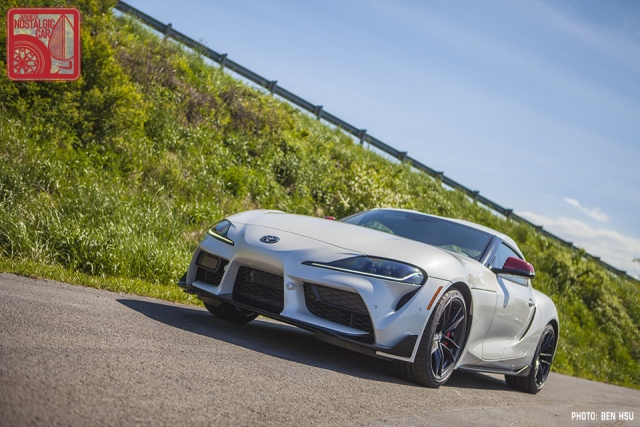

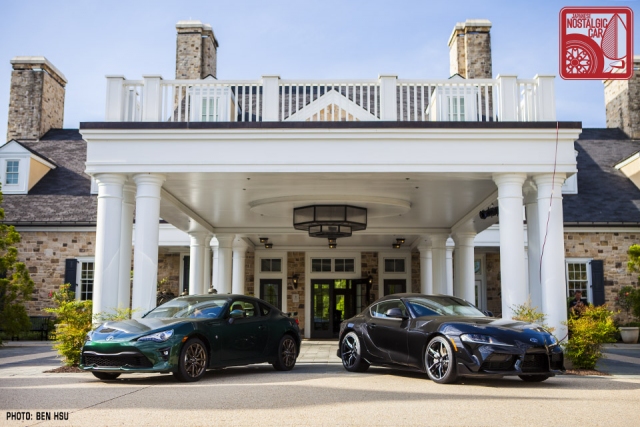

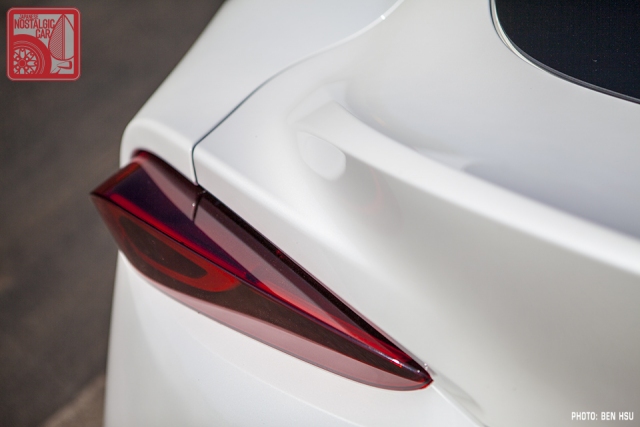

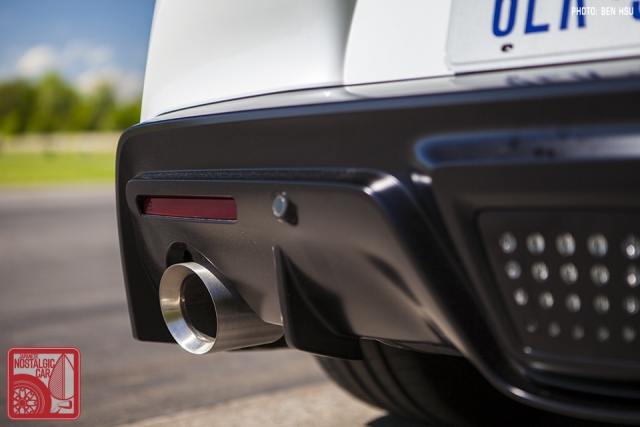
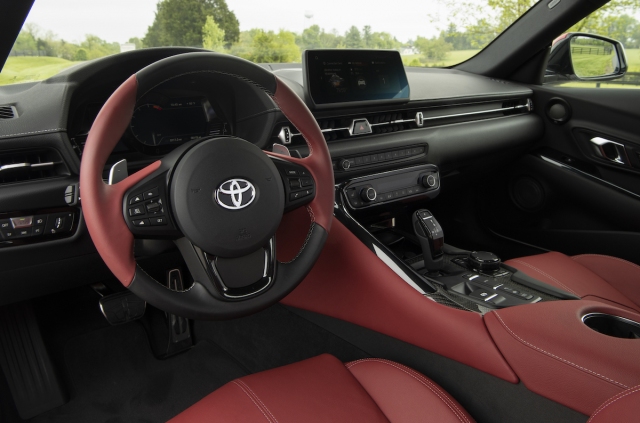

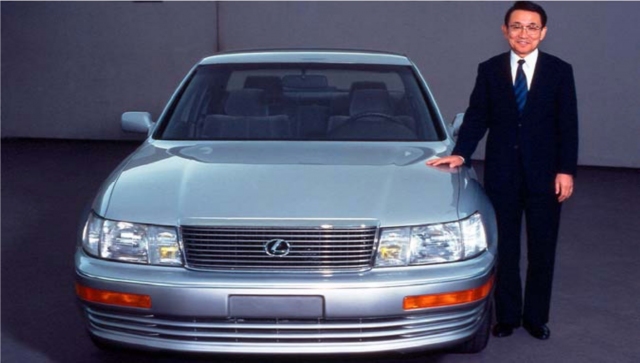
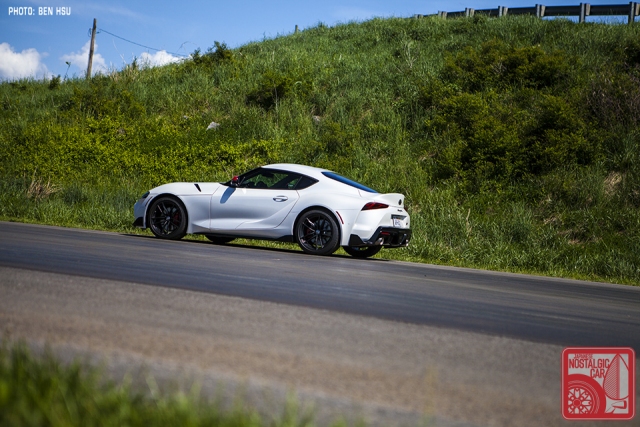
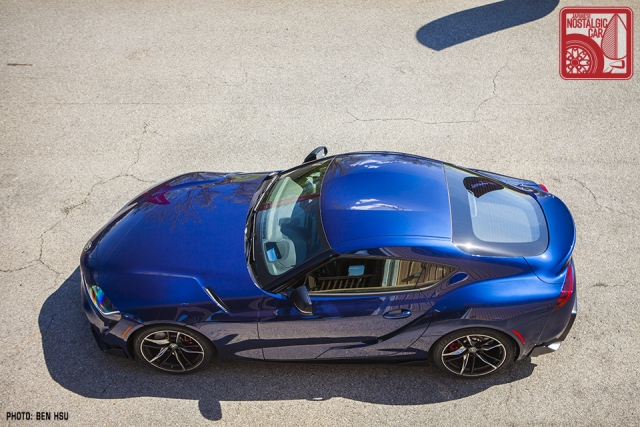
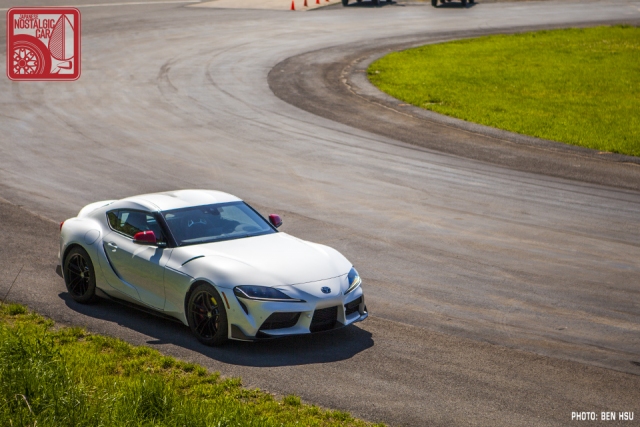

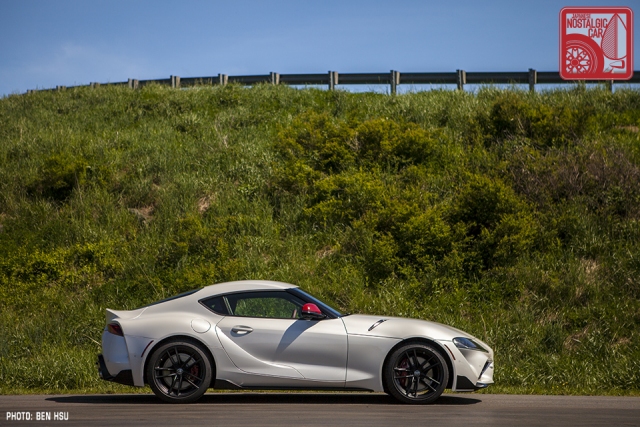






They are trying very hard to sell a car born of business decisions as a car born of passion and engineering, and this is the frisson that people are responding to. Most people don’t realize why they feel it’s off;my belief it’s this factor.
There was no buy in from the business side of the house for a home built GT or sports car. They don’t see the need or value of a Toyota Halo car at this time. What will it help them sell? They can’t keep up with the demand for Tacoma’s, the Camry sells at the top of its class, and the Prius created a new class of car has maintained its lead there for over a decade.
If you want to see how little Toyota as a company values the Supra (vice the few GT and sportscar enthusiasts that work there) think about this: How much did the Lexus RC and LC cost to engineer? How many multiples of the cost of this cars development were used on those two cars, one of which IS the halo car Toyota wanted, but for Lexus?
All this talk about it not happening if it didn’t happen this way is likely true, but not for the reasons implied. Toyota as a business just doesn’t care about the Supra, but was willing to allow a small budget and a small team (relative to normal vehicle development) a shot at building the car if they could figure out how. This is what they came up with.
Haters are simply going to hate. Get a Honda.
I don’t think I’m a hater; I actually like this car. I’ve mentioned elsewhere that I’m a long time BMW and Toyota fan, and have owned more BMWs than Toyota’s if memory serves.
I just question the narrative that is being put forth by Toyota. This really feels like a low effort, high reward move on Toyota’s part, akin to them selling the Mazda 2 DJ in the US as the iA. In this case they did more than change the badges though; they gave it a unique style and chassis tuning. To say that this is any different than the situation with the Miata ND and the Fiat 124 is fooling no one; these two situations are nearly identical. A smaller, more enthusiast focused company has the resources already sunk into a platform, and a bigger, wealthier, more business focused company offers to subsidize some portion (including helping the smaller company out by using their production lines) for a bespoke styled and tuned variant of the car. This is a win-win, but should never be understood as anything but a business focused decision.
I’m confident that this will be an excellent car, and likely the best BMW since the E46 given that Toyota had significant input on not just the tuning and styling, but engineering in some reliability too (which BMW has been getting hurt for). Make no mistake though; the only Toyota parts on this car are the badges and (depending on the definition) the body panels.
The comment was not a reply, but to head off the no doubt countless hater comments from the rabble up in arms that Toyota DARED to team up with anyone else.
I had posted a link to another interview with Tada-san about the genesis of the Supra, such as active support for the aftermarket, and why Toyota had to do it NOW, or never.
My apologies then!
So there you have it. Now, how many of you engineer wannabees would still go up to Tada-san and tell him off about linking up with BMW? Or are you so stuck in the 90s thinking they can just reopen the A80 assembly line and make a car that can’t come close to making current standards?
I don’t know of ANY other manufacturer that even takes the aftermarket into account. I doubt even Porsche would engineer a car so people can modify them, unless they were going to do it themselves. And BMW certainly would not have made no provisions for modifications, if Toyota wasn’t sharing the platform.
This may be the last inline-6 Toyota, many are not going to like it, but either electrification via hybrids or hydrogen is likely going to happen. I will bet you dollars to donuts that Toyota has looked at the BMW i8, Tada-san even hinted at that.
So reason and whine all you want haters, it ain’t going to change now. Either embrace it, or get a Honda.
I don’t find anything to fault in what Tada-san says. I also doubt the general public have any interest in understanding just how insanely hard it is to build modern cars. Battle lines have already been drawn, opinions will not be changed.
On a completely different note, Ben, the photos in both Supra articles are spectacular, and I wish they were in higher resolution so I could pirate them as desktop wallpaper.
Let me see what I can do. What resolution would you like?
Selfishly 1920×1080 would be awesome, but I’ll take anything!
I’d also love some high-resolution pics!
Interesting that this collaboration was not going to be called Supra. Would Toyota used another storied name (Levin comes to mind) or make up new one, like Vellfire?
I think the Lexus UCF10 LS400 was one of the most significant cars Toyota has ever made, in terms of manufacturing and design. No one up to then has made a car of that stature, but I credit Honda for having the guts to go upmarket with Acura, no doubt prodding Toyota to respond, but to go after Mercedes-Benz and BMW instead of just Americanizing a Crown.
I also noticed the Z Division moniker. The Z designation and it’s importance goes back to the 1904 Japan-Russia war, when the Japanese fleet ran up the Z (Zulu) flag to initiate the naval battle that defeated the Russians.
I think it’s dangerous to read extensive socio-political histories into corporate acronyms like that as it can create a false picture based on cultural misunderstandings.
I completely agree.
I said this on the previous post and will reiterate it here again: “The issue is not whether Toyota should have teamed up with BMW, its whether they should have used the Supra badge.” Teaming up with BMW makes good business sense on multiple levels and there is near universal agreement from the scribes that the A90 is a very good, if not great, car. We would not even be talking about this if Toyota had not put the Supra badge on it. By doing so they find themselves in the position of discussing an issue that only detracts attention from the glowing reviews this car is getting. I surmise that this car will always be known as the A90 once it gains its own legendary status.
My gripe is putting a supra badge on a BMW… a supra is an iconic Toyota… not an iconic bmw.. With Toyota cars like the Lexus RCF. I find myself not believing this “had” to be done with BMW everything.. I’m also upset that 90% of this thing is BMW.. like others have posted it gives the appearance that Toyota “went cheap” and “doesn’t care” about its customers. Then you add the fact it’s automatic transmission only…………. come on… this isn’t a Toyota’s product, it’s a BMW product. Please just stop trying to make people like this mistake.. because to be Frank that’s what this is. A mistake. I would have rather never seen the supra again VS having a BMW with Toyota badges.. in my mind this was an insult to Toyota lovers everywhere. A Japanese Car that’s not Japanese.
Hi Roy, after reading your comments, I can only totally agree with everything you have said. I, along with a select few others was invited down to the launch of the new BMW, sorry, Supra, as I have a beautiful MA61 in black and also a rare manual, it’s a beautiful thing and honoured to be asked to attend with the car, met Tada San, not every day you get to meet such an important guy in that field, an incredible car for sure, so much has gone into it, and its production, that said, to support the Supra badge it should be 100 Toyota, it’s a straight 6 yes, but an auto only? I agree with you, as nice as it is, I too would have preferred not to see the supra again, especially not in the guise of a BMW.
I’m guessing the black A60 here was your car, Paul.
http://japanesenostalgiccar.com/toyota-brought-these-classic-supras-to-the-a90-launch/
Hmm… so no commenters here are the least bit concerned or focusing on the real reason he set to build the best car possible *by any means necessary* by no later than 2019?
Everything from fuel economy to emissions to sound and safety regulations are going to get ever tighter after 2020-2021 and in the article he said it himself that an all-in-house Supra MKV would still not be ready until about 2023-2024. And it would sticker at $100k+ for the base model.
All of which means that regardless of the high potential base MSRP that would not sell very many units to justify the project in the first place their own Supra would not be eligible for sale in basically ALL of the major markets that would allow the business case for it to break even let alone turn a profit at all.
Tada also has high concerns for the tuning industry that is slowly running out of brand new popular enthusiast car models to build parts for that customers even WANT to tune.
I’m surprised that no one picked up on the fact that the longer Toyota took to release a Supra after this year of 2019 the sooner it would be forced to become a hybrid-electric or full electric.
Also, no one is appalled by his speculation that the eventual A100 might not even be a coupe body style or that it might be an autonomous car that the owner won’t actually be able to, you know, DRIVE themselves? He is speculating at that point but think about it– he build the A90 with BMW’s collaboration for the bare bones platform and driveline hardware before finishing and re-tuning all of it because of tightening global regulations.
And further, he’s speculating that in the future we might have a non-coupe AUTONOMOUS Supra. Think about that for a moment. A non-coupe, possible blob-ish nondescript shaped car that has no driver controls but that is still badged Supra. Can it really be taken seriously that people who love what these cars are would ever buy such an iteration? Such a suggestion bothers me far more than the A90 using a re-engineered and re-tuned B58 inline six and a co-developed base platform that two car companies separately re-engineered.
As an aside, if you remember the movie I, Robot with Will Smith, he drove avery nifty Audi that was autonomous. Remember the line his co-star said (more or less) “You’re going to drive!?”
So an autonomous sports car is not totally unthinkable, one does not drive at nine-tenths ALL the time, but you could go auto for the mundane stuff, like commuting.
Saw it at Toyotafest. Loved it. Yeah, it has BMW bits in the engine compartment, along with a BMW serial number prefix, but still was nice to see in person.
Too bad they didn’t have the FT-1 like they had a few years before so we could compare the two.
They also had a Hakone 86, but I’m sure all that and more is coming in a future article.
Wow. Car or no car. That is your choice here. Supras of any sort are not my thing, but I am glad that Toyota (and BMW) stepped up to build this car. Because the alternative is an empty spot in the catalog where this car would have been. As a car guy, I always choose “yes” over “no”, even if the car is not exactly what I would like to see.
BTW, Mazda, have you noticed that empty spot in your catalog, where something rotary needs to be?
I want to be proved wrong, but there will never be another pure rotary powered car. Even if Mazda miraculously found a solution to the fuel economy and emissions problems they would still have an engine that delivers no real torque compared to piston engines. With the dawn of the electric autonomous car beginning even piston engines will be have a hard time competing with them on performance. I love my rotary but I realize it is quickly becoming a historical footnote in automotive engine history. If Mazda does a sports car it will likely involve the newly announced Sky-Active straight six they are developing.
Never worked on a asian car with 13mm,15mm fasteners…. I guess i’ll have to buy ome new tools….
While reading this article I suddenly remembered while growing up that Mitsubishi came up with a small car called Minica which uses a motorcycle engine to power the car in order to save on gas but was underpowered so I told someone why not put a.BMW motorcycle engine on the car and he told me why would someone do that as it would lower the value of the expensive engine. So now it seems this statement is sort of becoming a reality but with a Toyota instead and it’s the other way around. Time has change.
So, by producing this BMW Supra, both BMW Z5 and Toyota Supra badge will be saved. What is not to love.
This story is a shining example of whats wrong with trends in current year. The end result is worldwide homogenization and the loss of genuine, valuable diversity. I’d rather have a world of tariffs and limited exchange where things can truly be DIFFERENT than a world where everything is the same everywhere: equally sucky and equally dystopian. A new form of “lowest common denominator”, driven by whichever bureaucracy/legislature can be the most overbearing and regulatory. Governments and corporations are building a dystopia in the name of globalization and “addressing climate change”. F that.